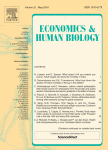- Joined
- Jul 4, 2019
- Messages
- 1,608
- Time Online
- 38m 56s
- Reputation
- 1,879

Major correlates of male height: A study of 105 countries
The purpose of this study is to explore the main correlates of male height in 105 countries in Europe & overseas, Asia, North Africa and Oceania. Actu…
Communist countries lagged behind in terms of economic development, but historically, the wealthiest of them were characterized by a diet associated with tall statures, which is based on milk products, pork and fish.
Three additional protein sources (meat total, pelagic marine fish, eggs) reach significance and the position of milk products as key stimulators of physical growth is further strengthened(r = 0.50; p < 0.001). As already mentioned in our previous study, these findings have a very solid rationale, because milk products, red meat, eggs and some species of fish have the highest protein quality out of all common foods.
Dairy proteins are most frequently consumed in the Netherlands, Sweden and Finland (almost 30 g/day), while in countries from the eastern half of Asia such as Cambodia,Laos or North Korea, their intake is virtually zero.
These results confirm that red meat and eggs are the most height-related components of the human diet after milk, which primarily stems from the complete amino acid spectrum of their proteins (Appendix Table 6).
@Boyo @Shrek @RamRanchCowboy on suicide watch after reading this
Besides low protein quality, a frequently forgotten limiting factor of plant-based diets is their low nutritional density, with a disproportionate load of ‘empty calories’ from starch and oils that must be consumed per unit of a key nutrient. The countries with the highest plant protein intake already belong to the most obese in the world, particularly among females, so it is not likely that the deficit of protein quality could easily be compensated by protein quantity.
Most importantly, our results indicate that plant-based diets are not able to provide the optimal stimuli for physical growth, even if the intake of total protein and total energy poses no problem. In fact, we observed a difference of 10 cm (174 cm vs. 184 cm) between nations relying on the surplus of plant and animal proteins,respectively. A low consumption of proteins that correlate highly with height can explain the seemingly perplexing, small stature in the developed countries of East Asia and the Muslim oil superpowers.
